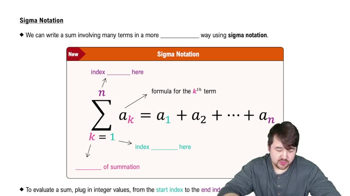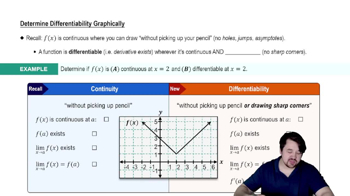State the inputs and outputs of the following relation. Is it a function? {}
Table of contents
- 0. Functions7h 54m
- Introduction to Functions16m
- Piecewise Functions10m
- Properties of Functions9m
- Common Functions1h 8m
- Transformations5m
- Combining Functions27m
- Exponent rules32m
- Exponential Functions28m
- Logarithmic Functions24m
- Properties of Logarithms36m
- Exponential & Logarithmic Equations35m
- Introduction to Trigonometric Functions38m
- Graphs of Trigonometric Functions44m
- Trigonometric Identities47m
- Inverse Trigonometric Functions48m
- 1. Limits and Continuity2h 2m
- 2. Intro to Derivatives1h 33m
- 3. Techniques of Differentiation3h 18m
- 4. Applications of Derivatives2h 38m
- 5. Graphical Applications of Derivatives6h 2m
- 6. Derivatives of Inverse, Exponential, & Logarithmic Functions2h 37m
- 7. Antiderivatives & Indefinite Integrals1h 26m
- 8. Definite Integrals4h 44m
- 9. Graphical Applications of Integrals2h 27m
- 10. Physics Applications of Integrals 3h 16m
- 11. Integrals of Inverse, Exponential, & Logarithmic Functions2h 31m
- 12. Techniques of Integration7h 41m
- 13. Intro to Differential Equations2h 55m
- 14. Sequences & Series5h 36m
- 15. Power Series2h 19m
- 16. Parametric Equations & Polar Coordinates7h 58m
0. Functions
Introduction to Functions
Problem 3
Textbook Question
Decide whether f, g, or both represent one-to-one functions. <IMAGE>
 Verified step by step guidance
Verified step by step guidance1
Understand the definition of a one-to-one function: A function is one-to-one if and only if every element of the function's range is mapped to by exactly one element of its domain. This means that no two different inputs should produce the same output.
To determine if a function is one-to-one, you can use the Horizontal Line Test. If any horizontal line intersects the graph of the function more than once, the function is not one-to-one.
Examine the graph of function f. Check if there are any horizontal lines that intersect the graph at more than one point. If such lines exist, f is not one-to-one.
Examine the graph of function g. Similarly, check for horizontal lines that intersect the graph at more than one point. If such lines exist, g is not one-to-one.
Conclude based on your observations: If neither graph is intersected more than once by any horizontal line, both functions are one-to-one. If only one graph passes the test, only that function is one-to-one. If both fail, neither is one-to-one.
 Verified video answer for a similar problem:
Verified video answer for a similar problem:This video solution was recommended by our tutors as helpful for the problem above
Video duration:
2mPlay a video:
Was this helpful?
Key Concepts
Here are the essential concepts you must grasp in order to answer the question correctly.
One-to-One Function
A one-to-one function, or injective function, is a type of function where each output is produced by exactly one input. This means that if f(a) = f(b), then a must equal b. To determine if a function is one-to-one, one can use the horizontal line test: if any horizontal line intersects the graph of the function more than once, the function is not one-to-one.
Recommended video:

One-Sided Limits
Function Notation
Function notation is a way to represent functions in mathematics, typically using symbols like f(x) or g(x). It allows for clear communication of the relationship between inputs and outputs. Understanding function notation is essential for analyzing and manipulating functions, as it provides a concise way to express the operations performed on the input values.
Recommended video:

Sigma Notation
Graphical Analysis
Graphical analysis involves examining the graph of a function to understand its properties, such as continuity, limits, and one-to-one behavior. By visualizing the function, one can identify key features like intercepts, asymptotes, and the overall shape, which aids in determining whether the function meets specific criteria, such as being one-to-one.
Recommended video:

Determining Differentiability Graphically

 1:36m
1:36mWatch next
Master Introduction to Calculus Channel with a bite sized video explanation from Patrick
Start learningRelated Videos
Related Practice
Multiple Choice
